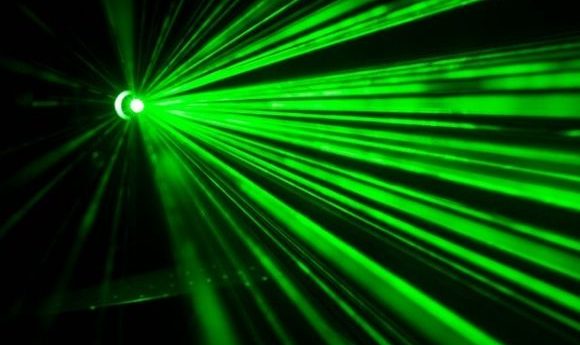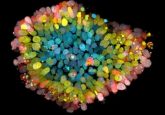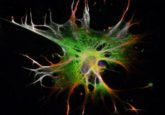Nano-sized laser: the future for imaging living tissues?

A nano-sized laser can function inside living tissues without damaging them, giving it potential as a new imaging technique.
Created by researchers at Northwestern (IL, USA) and Columbia (NY, USA) universities and measuring in at between 50 and 150 nanometers thick, the new laser is approximately 1/1000th of the thickness of a single human hair. Due to its tiny size, this nanolaser can fit and function inside living human tissues without causing any damage, giving it the ability to sense disease biomarkers and potentially treat neurological disorders such as epilepsy.
Predominantly made of glass, the biocompatible laser also shows promise for imaging in living tissues as it can be excited with longer wavelengths of light, triggering the emission of shorter wavelengths.
“The continuous wave, low-power characteristics will open numerous new applications, especially in biological imaging.”
“Longer wavelengths of light are needed for bioimaging because they can penetrate farther into tissues than visible wavelength photons,” explained study co-leader Teri Odom (Northwestern). “But shorter wavelengths of light are often desirable at those same deep areas. We have designed an optically clean system that can effectively deliver visible laser light at penetration depths accessible to longer wavelengths.”
The ability of the laser to operate in confined spaces also makes it applicable for use in the electronics field, potentially being used in quantum circuits and microprocessors.
- Carbon nanotube fibers restore damaged hearts
- Going beyond the filter: advances in spectral imaging technology
- How can you diagnose and treat skin cancer without cutting skin?
As both medical and electronic technology advances, the need for increasingly small lasers grows. Yet researchers often face the same wall; nanolasers are less efficient than the larger machines. In addition, the smaller lasers require shorter wavelengths for powering them, making them unsuitable for use in living tissues prone to damage.
The research team was able to overcome these issues by utilizing photon upconversion, taking the low-energy photons and converting them into one, high-energy photon. In this case, the low-energy infrared photons are upconverted to visible laser beams.
“Our nanolaser is transparent but can generate visible photons when optically pumped with light our eyes cannot see,” added Odom. “The continuous wave, low-power characteristics will open numerous new applications, especially in biological imaging.”





